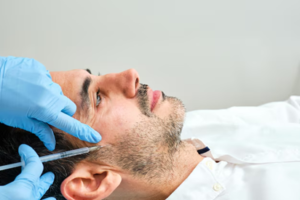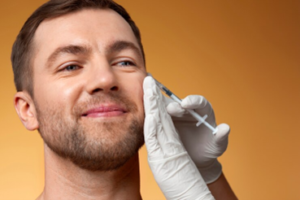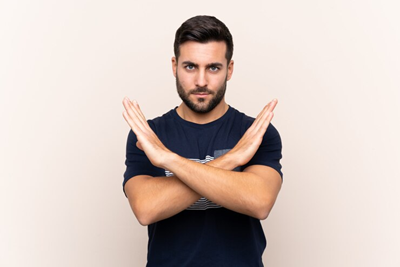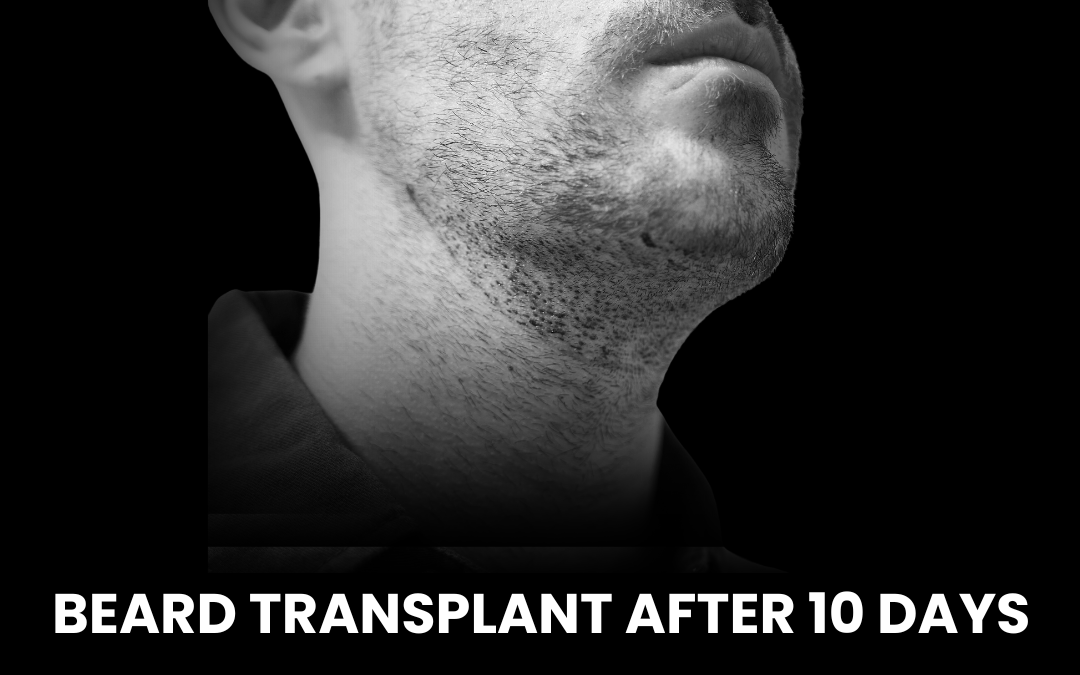Considering a beard transplant? This transformative treatment can provide the fuller, more defined beard you have always wanted, helping you fill in uneven areas or add facial hair for a more confident appearance. A beard transplant could be the perfect solution to enhance your look and boost your self-esteem.
But what exactly does a beard transplant involve? What should you expect from a beard transplant after 10 days? Let’s dive in and explore the journey of a beard transplant together.
This blog will highlight the key symptoms to watch for and offer expert advice on what to expect 10 days after a beard transplant. Understanding that hair loss affects not just aesthetics but also confidence and self-esteem, we aim to provide comprehensive insights to guide you through this process.
QHT, a premier hair transplant clinic in India, offers personalized and effective solutions for hair restoration. With expertise in Follicular Unit Extraction (FUE) and Dense Hair Implantation, QHT ensures clients receive natural-looking results with minimal downtime. Let’s explore how their advanced techniques can help you achieve your desired look.
Interested in a fuller, well-shaped beard? Get in touch with a skilled hair transplant surgeon for your beard transplant needs.
Curious to know the outcomes of a beard transplant after 10 days? Read on to understand what you can expect from this treatment.
What to Expect 10 Days After a Beard Transplant
 In the initial 10 days following a beard transplant, patients typically notice the first signs of the healing process taking shape. During this period, it is not uncommon to experience some redness, swelling, and slight discomfort around the transplanted area. These are normal responses as the body adapts to the new follicles.
In the initial 10 days following a beard transplant, patients typically notice the first signs of the healing process taking shape. During this period, it is not uncommon to experience some redness, swelling, and slight discomfort around the transplanted area. These are normal responses as the body adapts to the new follicles.
By the tenth day, these symptoms should begin to subside. The transplanted hairs will start to fall out—a process known as “shock loss,” which is a normal part of the recovery and makes way for new growth. It is crucial during this time to follow all post-operative care instructions provided by the surgeon to ensure the best results.
Achieve optimal outcomes with guidance from leading hair transplant experts. Consult with a professional today!
Concerned about potential complications post-beard transplant? Let’s delve into the symptoms of infection!
Symptoms of Infection or Additional Complications
 While complications are rare when a beard transplant is performed by qualified hair transplant doctors like those at QHT Hair Transplant Clinic in India, it’s important to stay informed about potential signs of infection or other issues:
While complications are rare when a beard transplant is performed by qualified hair transplant doctors like those at QHT Hair Transplant Clinic in India, it’s important to stay informed about potential signs of infection or other issues:
Persistent Redness and Swelling: If this extends beyond the first week, it may indicate an infection.
Severe Pain: Some discomfort is normal, but intense pain is not and should be addressed immediately.
Pus or Unusual Discharge: Any signs of pus or a foul-smelling discharge should prompt a consultation with the surgeon.
Fever: A fever could be a sign of infection and requires medical attention.
Identifying these symptoms early can help prevent further complications and facilitate a smoother recovery process.
Don’t let the patchy beard hold you back. Connect with a professional and get yourself treated right away!
Ready for some expert tips to speed up your recovery after a beard transplant?
Tips for Fast Recovery After Beard Transplant
Ensuring a quick and effective recovery after a beard transplant involves several key steps. Here are some expert tips from QHT Hair Transplant Clinic:
Keep the Area Clean: Gently wash the transplant area with a prescribed shampoo to prevent infections.
Avoid Physical Exertion: Limit exercise and physical activities that could increase sweating and irritate the transplanted area.
Proper Nutrition: Eating a balanced diet rich in vitamins and minerals supports hair growth and wound healing.
Stay Hydrated: Keeping hydrated helps maintain the health of new grafts.
Follow Your Doctor’s Advice: Adhering strictly to your doctor’s guidelines will significantly impact your recovery’s success.
Get professional guidance for faster recovery! Book your appointment with an expert today!
Wondering how to take care of yourself after a beard transplant?
Post-Operative Care
Following a structured routine after beard transplant surgery is important for getting the best results. Here’s a simple guide to what you should do each day to take care of yourself after the procedure:
Follow a Regimen: Stick to your surgeon’s advised care routine to promote healing and hair development.
Avoid physical strain: Avoid intense activity for the first several weeks after transplantation to reduce strain on the treated area.
Protect from Contaminants: Keep the transplant site free of external pollutants and toxins to avoid infection and create a healthy healing environment.
Regular Follow-Ups: Schedule and attend follow-up appointments with your clinic to ensure close monitoring of your healing progress. These visits allow you to make any required revisions to your care plan.
Ensure expert post-operative care under experienced hair transplant surgeons! Book your appointment today.
Curious about what not to do in the 10 days following your beard transplant?
Avoid These Mistakes 10 Days After Your Beard Transplant

- Touching or Scratching the Transplanted Area: Refrain from touching or scratching the treated area to prevent irritation, infection, or dislodging of grafts.
- Exposing the Area to Sunlight: Shield the transplant site from direct sunlight to prevent UV damage, which can hinder the healing process and affect graft survival.
- Applying Ice Directly to the Skin: While ice can help alleviate swelling, avoid placing it directly on the skin as it may harm the delicate grafts.
- Using Alcohol-Based Products: Steer clear of alcohol-based skincare products, as they can dry out the skin and disrupt the healing process.
- Skipping Post-Operative Care Instructions: Follow the post-surgery care instructions given by your surgeon closely to make sure your healing goes well and your new hair grows properly.
- Overexertion or Strenuous Activities: Avoid engaging in vigorous physical activities that could strain the transplant area, potentially causing complications or disrupting the healing process.
- Neglecting Proper Hygiene: Maintain diligent hygiene practices, including gentle cleansing of the transplant area as per your surgeon’s instructions. Neglecting hygiene can increase the risk of infection and impede healing.
Before wrapping up, check out the beard transplant before and after pictures from our gallery.
Conclusion
Navigating the recovery phase after a beard transplant is crucial for achieving the best results. Every step taken post-operation, from following the prescribed care plan to maintaining open communication with the medical team, greatly influences the final result of the beard transplant.
By staying informed and actively participating in the recovery journey, patients can enhance their chances of achieving their desired facial hair look. It is important to remember that the recovery process is a collaborative effort between the patient and their healthcare provider, ultimately leading to the fulfillment of their beard transplant goals. QHT hair transplant clinic remains committed to delivering excellence in hair transplant solutions and looks forward to assisting patients in realizing their desired facial hair look.
FAQ’s
How long does it take to look normal after a beard transplant?
It generally takes about 2-4 weeks for the initial healing and for the transplanted area to look more presentable. Full results, with a natural-looking beard, usually take around 6-9 months.
Is it normal to experience itching or discomfort in the transplanted area 10 days after surgery?
Yes, it’s common to experience itching or discomfort in the transplanted area during the initial healing period.
Can I touch my hair after 10 days of hair transplant?
You should avoid touching your hair directly for at least a couple of weeks after a hair transplant to prevent dislodging grafts or causing irritation.

